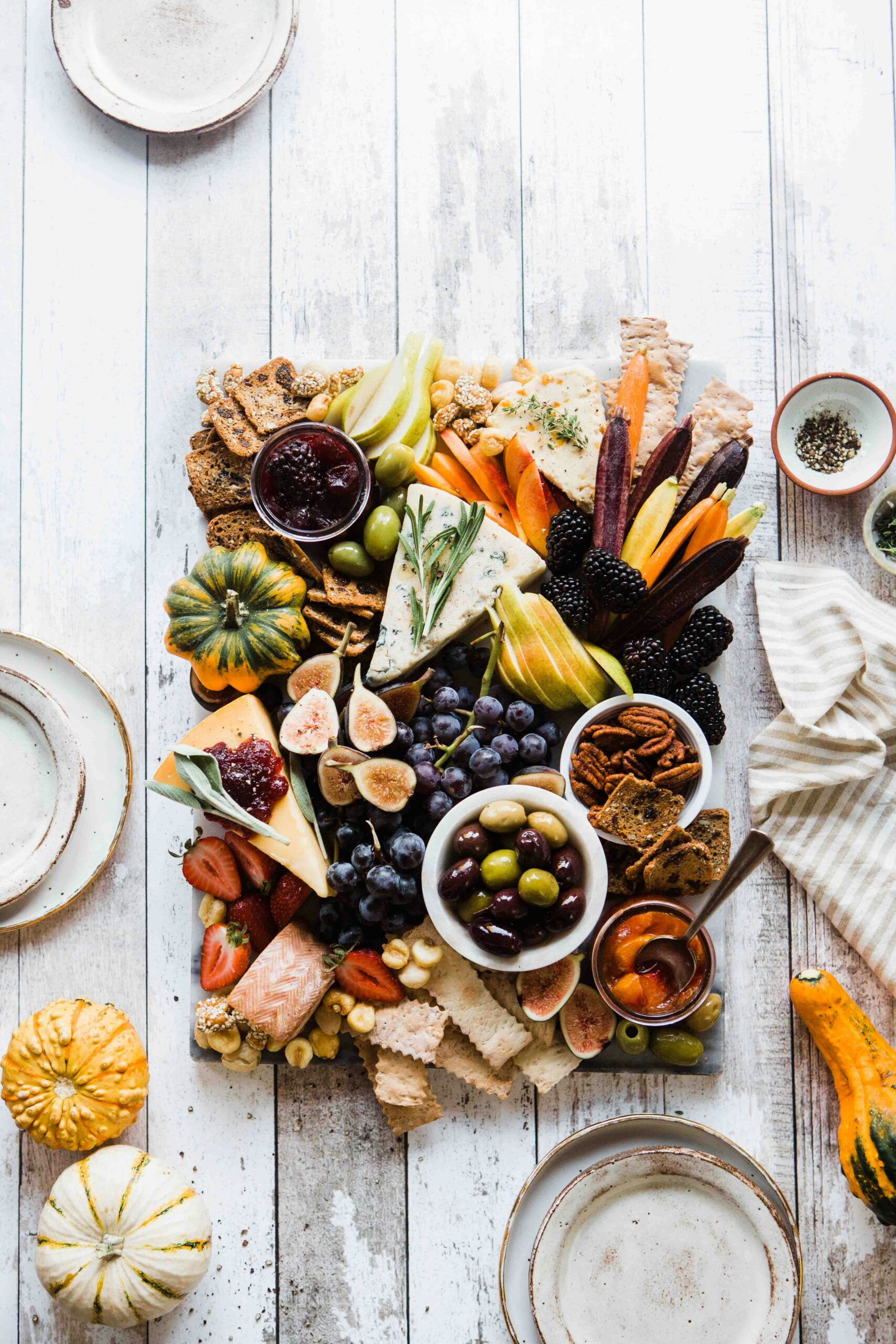Embrace Seasonal Flavors with Fresh Herb Infusions in Your Cooking
As the seasons change, so too does our relationship with food. There’s something utterly magical about the way ingredients transform with the weather, bringing a cornucopia of flavors right to our plates. One of the most delightful ways to celebrate this seasonal bounty is through fresh herb infusions. Imagine a warm summer evening with a glass of basil-infused lemonade or a cozy winter night warmed by the comforting aroma of rosemary and garlic in a hearty stew. These are just a few examples of how herbs can elevate your cooking while keeping it fresh and exciting.
The Allure of Fresh Herbs
Fresh herbs are like the confetti of the culinary world—adding color, flavor, and a touch of elegance to any dish. But beyond their aesthetic appeal, herbs carry the essence of the seasons. Each herb has a unique profile that can be highlighted during its peak season, making cooking an ever-evolving experience. It’s striking how a simple sprig of mint can transport you to a sun-drenched garden in June, while a hint of sage can evoke the crisp, golden hues of autumn.
Connecting with Nature
When you embrace seasonal flavors with fresh herbs, you’re not just cooking; you’re connecting with nature. Think about it—herbs are often the first things to burst forth in spring, signaling the end of winter’s grasp. Remember that first whiff of freshly cut basil? It’s invigorating! This connection can inspire creativity in the kitchen, motivating you to experiment with dishes that celebrate each herb’s unique qualities. The vibrant green of cilantro could brighten up a dull taco night, while the earthy tones of thyme can ground a dish in warmth.
Choosing the Right Herbs for Each Season
To fully embrace seasonal flavors, it’s essential to know which herbs are at their peak during different times of the year. Here’s a quick rundown of some of the most popular herbs and the seasons that sing their praises:
- Spring: Basil, chives, dill, mint, parsley, and tarragon.
- Summer: Basil, cilantro, dill, marjoram, oregano, and thyme.
- Fall: Sage, thyme, rosemary, and parsley.
- Winter: Chives, rosemary, sage, and thyme.
Now, let’s dive deeper into some of these herbs and explore how you can incorporate them into your cooking.
The Versatility of Basil
Basil is perhaps the superstar of the herb world—its sweet, slightly peppery flavor makes it a staple in countless cuisines, from Italian to Thai. Just the sight of fresh basil can whisk you away to a sun-drenched Mediterranean terrace. One of my fondest memories involves whipping up a caprese salad with ripe heirloom tomatoes, creamy mozzarella, and a generous handful of torn basil leaves. The fresh basil was like the cherry on top—so vibrant, it practically sang on the plate.
Infusing Oils and Vinegars
One way to truly embrace the essence of basil is by infusing oils or vinegars. Imagine drizzling basil-infused olive oil over grilled vegetables or using it as a magical ingredient in dressings. Here’s a quick method to create your own basil oil:
- Combine one cup of fresh basil leaves with one cup of olive oil in a blender.
- Blend until smooth, then strain the mixture through a fine mesh sieve or cheesecloth.
- Store in a glass bottle, and you’ve got a herbaceous elixir at your fingertips!
This infusion not only preserves the flavor but also adds a beautiful green hue to your dishes. And if you’re feeling adventurous, try making a basil-infused vinegar by steeping fresh basil in white wine vinegar for a couple of weeks. The result? A zesty dressing that transforms a simple salad into a culinary masterpiece.
Dill: The Brightener of Summer Dishes
When summer rolls around, dill makes its grand entrance, bringing with it a bright, slightly tangy flavor. It’s often associated with pickling (hello, dill pickles!) but its versatility stretches far beyond that. I still chuckle at the time I mistakenly added too much dill to a potato salad—it was a brave experiment, but sometimes culinary concoctions don’t quite go as planned! However, when used judiciously, dill can elevate dishes with its distinct flavor.
Pairing Dill with Seafood
One of the best ways to use dill is to pair it with seafood. The freshness of dill complements delicate fish beautifully. Picture this: a simple grilled salmon fillet garnished with a sprinkle of fresh dill and a squeeze of lemon. It’s effortlessly elegant and showcases the herb’s natural brightness.
Another delightful concoction is a creamy dill sauce. Mix together Greek yogurt, fresh dill, lemon juice, and a touch of garlic, and you’ve got a versatile sauce perfect for drizzling over grilled veggies or as a dip for fresh pita bread. Trust me, once you try it, you’ll want to slather it on everything!
Mint: The Refreshing Wonder
Mint is like a breath of fresh air—literally! Its cool, refreshing taste can add a surprising twist to both sweet and savory dishes. I remember the first time I tasted a mint-infused mojito during a summer barbecue; it was a revelation. How could something so simple be so utterly refreshing? The key, of course, is using fresh mint. Dried mint just doesn’t cut it.
Infusing Beverages with Mint
One of the most delightful ways to utilize mint is in beverages. Whether it’s a mint-infused lemonade or an herbal tea, the possibilities are endless. For a quick mint lemonade, muddle fresh mint leaves with sugar, add lemon juice and water, and top with ice. It’s a summer staple that keeps you cool and refreshed.
And let’s not forget about desserts! Mint pairs beautifully with chocolate, making it a natural choice for brownies or chocolate mousse. A simple mint syrup can elevate a scoop of vanilla ice cream to five-star status. Just heat equal parts sugar and water until dissolved, add a handful of fresh mint, and let it steep—voilà, you’ve got yourself a delightful topping.
The Earthiness of Rosemary
As the temperatures drop and fall arrives, rosemary begins to shine. Its earthy, woodsy flavor is perfect for hearty dishes that warm you from the inside out. I vividly recall a chilly autumn evening when I decided to roast a chicken infused with rosemary, garlic, and lemon. The aroma that filled my kitchen was nothing short of magical, enticing everyone to gather around the dinner table. There’s something about rosemary that just feels like home.
Infusing Roasted Dishes
Rosemary is a fantastic herb for roasting. Whether it’s chicken, potatoes, or even root vegetables, a few sprigs of rosemary can transform a humble dish into something extraordinary. Here’s a quick tip: when preparing roasted vegetables, toss them with olive oil, minced garlic, and chopped rosemary before placing them in the oven. The result? A fragrant, savory side dish that pairs beautifully with any main course.
Additionally, rosemary-infused olive oil can be a game changer. Drizzle it over pizzas, pasta, or even a simple bruschetta for an aromatic kick. It’s like a culinary hug in a bottle!
Thyme: The Timeless Herb
Thyme is the unsung hero of the herb world—often overlooked, but always reliable. Its subtle earthiness can complement a wide variety of dishes. I once had a friend who claimed thyme was her secret weapon for elevating any meal. “A dash of thyme,” she said, “and suddenly everything tastes gourmet!” While I’m not entirely convinced of its magical prowess, I have to admit that it does add a certain sophistication.
Culinary Applications of Thyme
Thyme works wonders in soups, stews, and sauces. It’s particularly lovely when paired with mushrooms, adding depth and warmth to the dish. One of my favorite comfort meals is a creamy mushroom thyme risotto; it’s like a warm blanket on a chilly evening. Just remember to keep some fresh thyme on hand for finishing touches—its delicate leaves can brighten up any dish.
Thyme-infused butter is another delightful creation that can elevate your cooking. Simply soften butter, mix in fresh thyme, and chill it again. Use it on warm bread or as a finishing touch on grilled meats, and you’ll find it hard to go back to regular butter again.
Preserving the Essence of Herbs
As the seasons shift and your herb garden flourishes (or wilts—hey, it happens), you might find yourself wondering how to preserve the essence of these seasonal flavors. There are several methods to extend the life of your fresh herbs, allowing you to savor their goodness year-round.
Freezing Fresh Herbs
One of the simplest ways is to freeze them. Chop fresh herbs and mix them with olive oil in an ice cube tray. Once frozen, transfer the cubes to a freezer bag for easy access. This method preserves their flavor and can be easily tossed into soups, stews, or stir-fries. It’s like having a little burst of summer in your winter dishes!
Herb Salts and Blends
Another option is to create herb salts or blends. Simply chop fresh herbs, mix them with coarse salt, and let them dry. This not only extends the life of your herbs but also infuses your dishes with extra flavor. Sprinkle herb salt on roasted vegetables, meats, or even popcorn for a gourmet touch.
Experimenting with Herb Combinations
One of the most enjoyable aspects of cooking with fresh herbs is experimenting with combinations. Herbs are not just standalone stars; they can also be team players. Combining them can create complex flavors that elevate your dishes to new heights. For example, basil and mint can be a refreshing duo in a summer salad, while rosemary and thyme can harmoniously enhance a roasted chicken.
Creating Herb-Infused Marinades
Consider experimenting with herb-infused marinades. A simple marinade of olive oil, lemon juice, garlic, and a mix of your favorite herbs can transform meats and vegetables into flavor-packed meals. The beauty of marinades lies in their flexibility—feel free to adjust the herbs based on what’s in season or what you have on hand.
Cooking with Herbs: A Personal Journey
In my own culinary journey, I’ve found that herbs have a way of telling stories. Each dish I create with fresh herbs carries a memory or a moment that I cherish. Perhaps it’s a family recipe passed down through generations or a new creation inspired by an evening out. Cooking becomes a canvas, and fresh herbs are the vibrant colors that bring it to life.
As I reflect on my experiences, I encourage you to embrace the seasonal flavors with fresh herb infusions in your cooking. Don’t shy away from experimenting—whether it’s a new herb or an unexpected pairing, you might just stumble upon a winning combination. After all, cooking is as much about exploration as it is about nourishment.
Conclusion: The Journey of Flavors
As we navigate through the seasons, let fresh herbs be your guide. They are the storytellers of our culinary adventures, infusing our dishes with flavor and memories. Whether it’s the bright notes of basil in summer or the earthy warmth of rosemary in winter, herbs offer a unique way to embrace the essence of each season. So, roll up your sleeves, get your hands dirty in the garden or at the market, and let the vibrant flavors of fresh herbs transform your cooking.
In the end, cooking with fresh herbs isn’t merely about flavor—it’s about connection. It’s about bringing a piece of nature into your home and sharing that with family and friends. So, embrace those seasonal flavors, get creative, and let the herbs inspire your culinary journey. You never know what delicious discoveries await!




